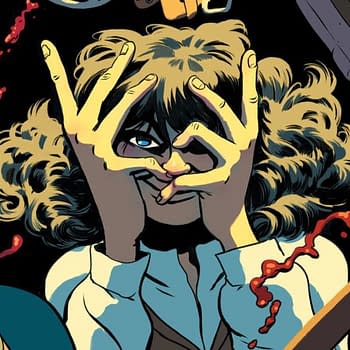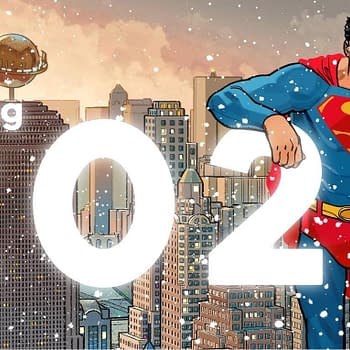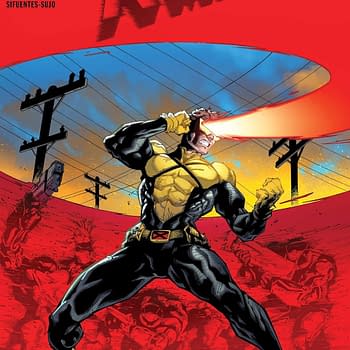Posted in: Comics | Tagged: Comics, entertainment, florence and the machine, The Wicked + the Divine
The Florence + The Machine

And this is Amaterasu, from The Wicked + The Divine.
Recently, the creators of my favourite comic, Phonogram, published a new series called The Wicked + The Divine. It took Phonogram's premise – that music is life-changing magic – one step further: in this world, pop stars are gods, chosen from among our mortal number but invested with a mesmerising divine power. The catch? Once deified, they only have two years to live. All of the gods of The Wicked + The Divine resemble real artists: Bowie, Prince, Rihanna. Sun goddess Amaterasu, especially, looks flagrantly familiar. Flame hair, bright facepaint, full white skirts and sleeves a-whirl… "Oh my god, what is this… OH MY GOOOOD!" Florence Welch whisper-screams when I show her the pages at her kitchen table. I tell her about the two-years-to-live bit. "That makes a lot of sense," she says, touching the pages softly as she stares.
And you can see why Florence made a lot of sense as Amaterasu, too. Her first two albums, 'Lungs' and 'Ceremonials' – with their cataclysmic, cathartic songs, their maximal-to-the-max production and their opulent videos and press shoots – created a powerful image: a rampaging Celtic deity, a queen of self-destructive passions. But as in The Wicked + The Divine, godhood can take its toll on the incarnated, eat away at their human side. Amaterasu, in the comics, is 'really' Hazel Greenaway, 17, from Exeter. Just as Florence Welch is really, well, Florence Welch, 28, from Camberwell. But on her new album, 'How Big, How Blue, How Beautiful', Florence has given up her divine glories for a new, more everyday strength.
I was reminded of this especially reading this week's issue of TWATD (or 'twatted' as I can't stop myself from calling it) now with Tula Lotay on art, while Jamie McKelvie works on the new Phonogram. And Tua's style for this comic took me back to the much maligned decade, the seventies. When British girls comics ruled the roost, complete with cut out clothing to try on equally cut out women. And it was all about the transformation of the self and the regarded self by external alteration.
Or putting on clothes to see what difference they make. Which also gives me a great excuse to run this video by Edgar Wright too…
















